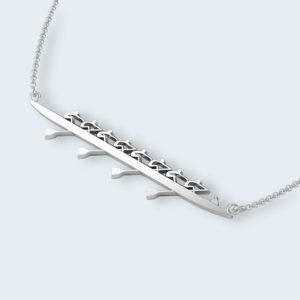Imagine pushing yourself to your physical limit hours a day everyday….this is the world of ROWING.
Now imagine doing the same without drinking or eating for up to 48 hours….this, all too often, is the world of rowing LIGHTWEIGHT.
In addition to the physical stamina needed for practice and competition and more than just strength, many lightweight rowers have to have the mental stamina necessary to constantly watch what they eat, count calories, and consistently “weigh-in” at a certain weight in order to be successful. However, far too many lightweight women who are currently rowing lightweight are above a pre-season cutoff weight that should exist for lightweights (as determined by coaches, etc.). In turn, these women play dangerous mind games in their relationships with their bodies and the food they eat (or don’t eat!) which could lead to extensive permanent damage to their health.
The photos above were taken hours before a weigh-in. Most of the lightweights are tired because only one or two of them can freely eat or drink the day of weigh-ins. Most others are running on less than 500 calories and insufficient amounts of fluids for the level of activity they are doing. One of the women did not eat or drink anything for over 48 hours and went for a pre-weigh in row with her teammates. She looked exhausted. I can’t imagine she was helping the other seven women much in pulling the boat through the water.
There are countless extreme weight-loss tactics that borderline women use in order to get down to 130 pounds. Most involve dehydration- losing as much as 8 pounds of water weight in a day! Spitting, sweat-running in multiple layers of clothing in extreme heat, sitting in a steam bath for up to an hour, and layering-up and sitting in cars with the heat blasting are just a few examples.
And once the weigh-in has passed successfully it’s all about rehydration and eating. In this case, one of the rowers was 3 pounds under weight after not eating for more than two days. However, after being hungry and thirsty for so long, it’s nearly impossible for most of the lightweights not to binge. While none of the women stepped on a scale after eating and drinking that evening, it can be assumed that each of them regained all of their weight in a matter of hours.
Finally (and only after a fellow lightweight spoke up about the issue), an unannounced mid-week weigh-in occurred and anyone not falling within three pounds of the necessary weight would no longer row lightweight. Keep in mind that this is something that should have been going on since the very first practice. The coaches finally made the correct decision- they told the one rower who was having difficulty that her lightweight days were over. While they could have announced it in a more tactful way, rather than in front of the rest of the team (see a teammate’s disapproving face above), the point is that something was finally being done. The rest of the team continued on and faired well, getting medals in many races. The final photo always makes me wonder though: is the thrill of victory really worth the all too evident agony of making weight?
What do you think?
As a coach, as an athlete? What is needed to create a safe environment for lightweight rowing.














This Post Has 20 Comments
The “lightweight” category should be eliminated and there should be several categories based on weight classifications, just like with boxers. So, what we would have are races with girls that weigh between 90 and 115, 116 and 130, 131 and 145, 146 and 160. Each weight class would have their own races and then all girls can race without having to fight against their own bodies. Each class can have a name like featherweight, bantomweight, rowersweight, steamersweight or wahtever. No stigma and more girls will get to compete.
Or by height…small or tall 🙂
I like this idea.
In addition, while changing the lightweight minimum weight would just create the problem at a higher weight, I think there’s a “minimum” weight that can be calculated based on someone’s height (say below 170cm), with an athletic build, so they don’t try to have a BMI of 17-18 (which is classified as underweight), but they stay a healthy weight and don’t starve themselves.
Maybe the BMI itself could be a good way to categorise the rowers.
As the parent of a natural lightweight rower:
My first choice would be: Lightweight rowing in High School should be eliminated. It is unnecessary at the high school level. Lightweight rowers can compete quite successfully with open weights. Look at the USRowing youth nationals V8’s. Every boat had lightweights.
If lightweight highschool rowing is to continue, ELIMINATE a higher winter weight limit. If the racing weight is 130, then that should be the winter erg standard as well. 135 just encourages athletes in the 135-140 range to row lightweight. It is not healthy or appropriate. Most of these rowers are in terrific shape, dieting hurts their training and overall performance.
A plea to college coaches! Please recruit only natural lightweights. Please require weights to be submitted with all PRs, and only recruit athletes who are consistently at or below racing weight.
Thanks for your comments, Amy – it’s really adding to the debate. There are only a few countries where high schools offer lightweight rowing and New Zealand is one. I was unaware USA also did it.
Thank you for bringing attention to our plight! In college, I had no difficulty making weight…but for another dangerous reason not mentioned – maintaining excessively low body fat. Not healthy for a woman…and with lifelong consequences. Oh that we would boat by height…how about 5’4 and under???
Multiple considerations here.
“Lightweight” at 130/155 is historically more like “middleweight”.
Other sports with weight classes often have multiple classes separated by 7/15 kg increments. Except possibly for singles, this is probably not feasible in rowing for multiple reasons.
One problem with a weight limit is “making weight”. One possible way to minimize the trauma of making weight is to require the athlete to always make weight. The athlete should weigh in if not every day then at least twice a week. This would demonstrate a consistent and more healthy body composition. Before each practice and race, step up on the scale. Too heavy and the rower does not row, with maybe one or two minor deviations a season allowed..
Another aspect is actually putting on races for lightweights. This is particularly true for Masters rowers, where most regattas do not have lightweight races for all boat classes. My pair partner and I are lightweights, but there is never a lightweight pair race. It is a bit daunting when the boat we pull up to at the start line is an ex-Olympic heavyweight pair.
one of the most important things to do when deciding to row lightweights is to get measured for FATFREE weight and Bone structure weight.
As a rule the average weight off the two will give you a good indication of the possibility of rowing lightweights!
Word of warning!!!!!
The last place you loss fat is from around the eyes , if you see athletes who’s eyes look like there falling back into the sockets should see a doctor immediately !!!
Take care!
I rowed lightweight in college and for Team USA ‘back in the day’ and the same tactics were used back then by those who didn’t, or couldn’t, properly manage their weight. I believe that body composition (used to be called body fat) testing should be used in combination with actual weight to determine whether an athlete is getting to weight safely. I also believe surprise weigh-ins should be used as well as mandatory weekly weigh-ins. In college we were given target weights and a target amount to lose each week to achieve that weight. This was then supported by nutritional counseling as to how many calories a day to eat and what foods to eat to be able to safely work out and still lose weight. It takes ALOT of oversight at the collegiate level when many athletes are just starting to learn about training and nutrition.
how to comment with brevity on such matter!
The human spirit will always seek to define itself against limits – perceived or real, and sports with weight restrictions are no exception to this very human of conditions. Just look at the free-diver who pushes what is perceived as humanly possible – only to find this very definition becomes redefined once another ‘inhuman’ unassisted depth is achieved in a single dive.
So it is a given that if we set boundaries, we will always try to push them to the limit. You alter the weight limit, you simply move the goalpost – athletes will still try to ‘put the ball in the goal’.
Key to creating a safe environment is knowledge and the appliance of science (rather than myths or old wives tales). People running LW crews and programmes need to ensure they are suitably educated and have access to good resources.
Safe training and competition parameters can be established (as they are for many lightweight programmes), and testing and analysis rather than conjecture used to inform this on an athlete by athlete basis.
You must also add to this the psychological component which – owing to the above-mentioned human condition will vary from athlete to athlete, and in a crew or squad situation must be understood to prevent complex dynamics that result in guilt-driven or irrational / unsafe actions to meet expectations. Some athletes can cope mentally with the rigours of dieting or waking up above race weight, and some cannot.
To put the above into context:- When I raced internationally, many LWs would drop several kg on the day(s) before early season regattas – as their bodies fought natures tendency to expect to maintain a buffer of weight through winter training (needed by the body cope with climate – cold European winters – it is much easier to maintain a low weight in the warm) and to deflect illness (also related to climate). At early season regattas it was not unheard of (and yes I have done it) to hear of 5-6kg drops for LW men and 3-4kg drops for LW women.
In a crew situation varying approaches to the methods and timing of weight loss can lead to extreme crew or squad tension (in an environment which – lets face it is already pretty highly strung), and can form a significant distraction to the end goal.
Pretty early on it was identified (via submersion and body mass testing at the BOMC) that I could not spend an entire season down at race weight – I needed to taper down towards the end of the season (and with the help of a squad dietician), and would always loose the last 0.4-0.5kg the morning of racing via a warm up paddle and light sweat run.
This worked for me – in fact when we raced open weight, I struggled with nerves without this pre-race and weigh-in routine that ensured I felt fully warmed up and flexible. Once it became an agreed strategy for the whole crew, who did things a little differently, it removed conjecture about what was possible and not possible for me at varying stages of the season and gave us a plan. We just went out and beat the HWs early season as well.
Without this testing and analysis, and an understanding that I was more comfortable with this approach, I would have potentially been subject to an unsafe diet plan, or set a target weight that was untainable, and made miserable over it.
Once we applied a bit of science and knowledge, we found a safe solution that delivered.
As a coach of high school rowing (and previous high school athlete) I absolutely think weight classes should be eliminated at the high school level. Obviously I get the logic behind it, but it is so damaging to the athletes. Encouraging teenagers to make weight (despite the tactics–even “approved” or health based ones are questionable) is damaging. And more often than not, it leaves the open weight athletes (nay heavyweight, more commonly used among the athletes I coach) feeling fat (even if they’re over 130 pounds because of height or muscle mass). I just think that it is overall far too damaging, regardless of the potential benefits of separating out the smaller athletes.
Martha – that’s a good point you make. Which countries run lightweight events for school kids? I know New Zealand does.
Lightweight rowing and weight management is about winning. Yes, lightweight rowers often prefer to “cut weight” (rapidly drop weight pre-weigh in) rather than lose it (diet slowly in a healthy way over a few months so that you naturally sit at weight). The reason they do this is not because they are naturally too big. It is because being big is an advantage in rowing, and cutting weight allows you to race bigger and stronger. Coaches encourage tall athletes to race lightweight because being tall means that you have a longer stroke which will make the boat faster. In fact, on my team, the “natural lightweights” are encouraged to bulk up so that they need to cut weight for the race.
Of course, cutting weight isn’t the healthiest thing–especially when you use the ineffective strategies mentioned in this article. Excessive dehydration will make you slower on race day. As a result, you will find that successful lightweight teams will only cut 6-8 lbs in the week leading up to a weigh in–a very healthy amount–and that the teams who use dangerous cutting practices are usually losing teams.
Yes, there are lightweights out there who dehydrate 15 lbs in a day, eat themselves up to +20, lose their races because they were dehydrated and malnourished and fat, and embarrass themselves. But there are idiots in heavyweight rowing too, and to generalize this to my entire sport is unfair. Most of the lightweights with gold medals around their necks are quite healthy.
-a lightweight rower
Thanks for this, Robert. You are the most “balanced” reviewer and I like your point about the winners being the sensible dieters.
Wow.
In a sport where height and lever length is everything, the focus is on weight! Take the focus away from weight and put it on a factor that is not a variable and cannot be influenced by training. Let the tall people be as light or heavy as they need to be to be a fully fit and healthy athlete. Then create a height limited category – e.g. under 175cm for the rest of the general population.
Controversial? Yes.
Easy to implement? Incredibly.
Will make for fairer racing for all? Definitely.
Will make for a sport that is perceived as more accessibly to all? Hell yeah.
Will mean that crews are not watching every calorie or taking extreme measures to make a weight limit? Absolutely.
You would be very welcome to reproduce as a blog article. The outcomes of changing to a height based system are positive to athlete and sport alike.